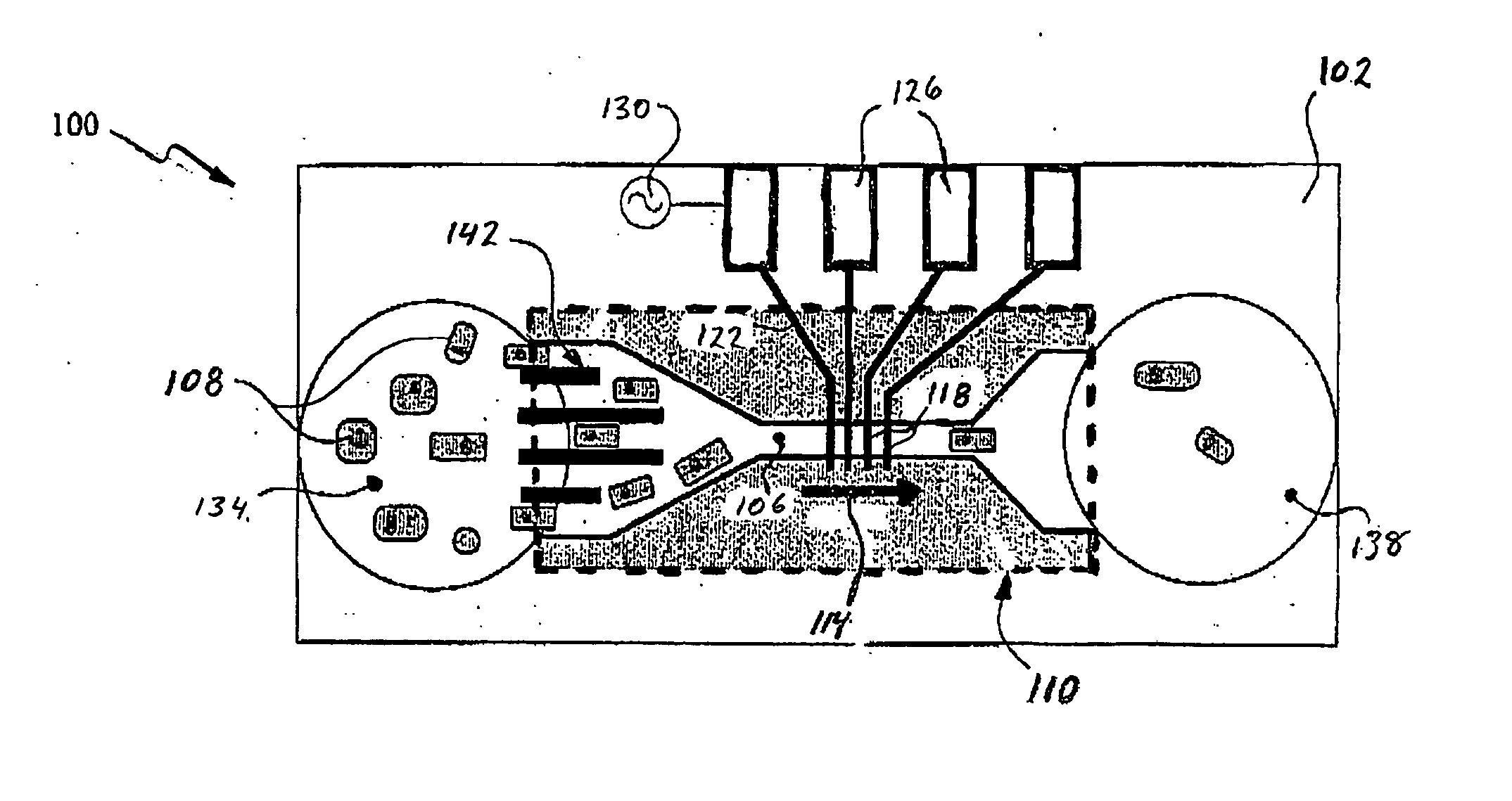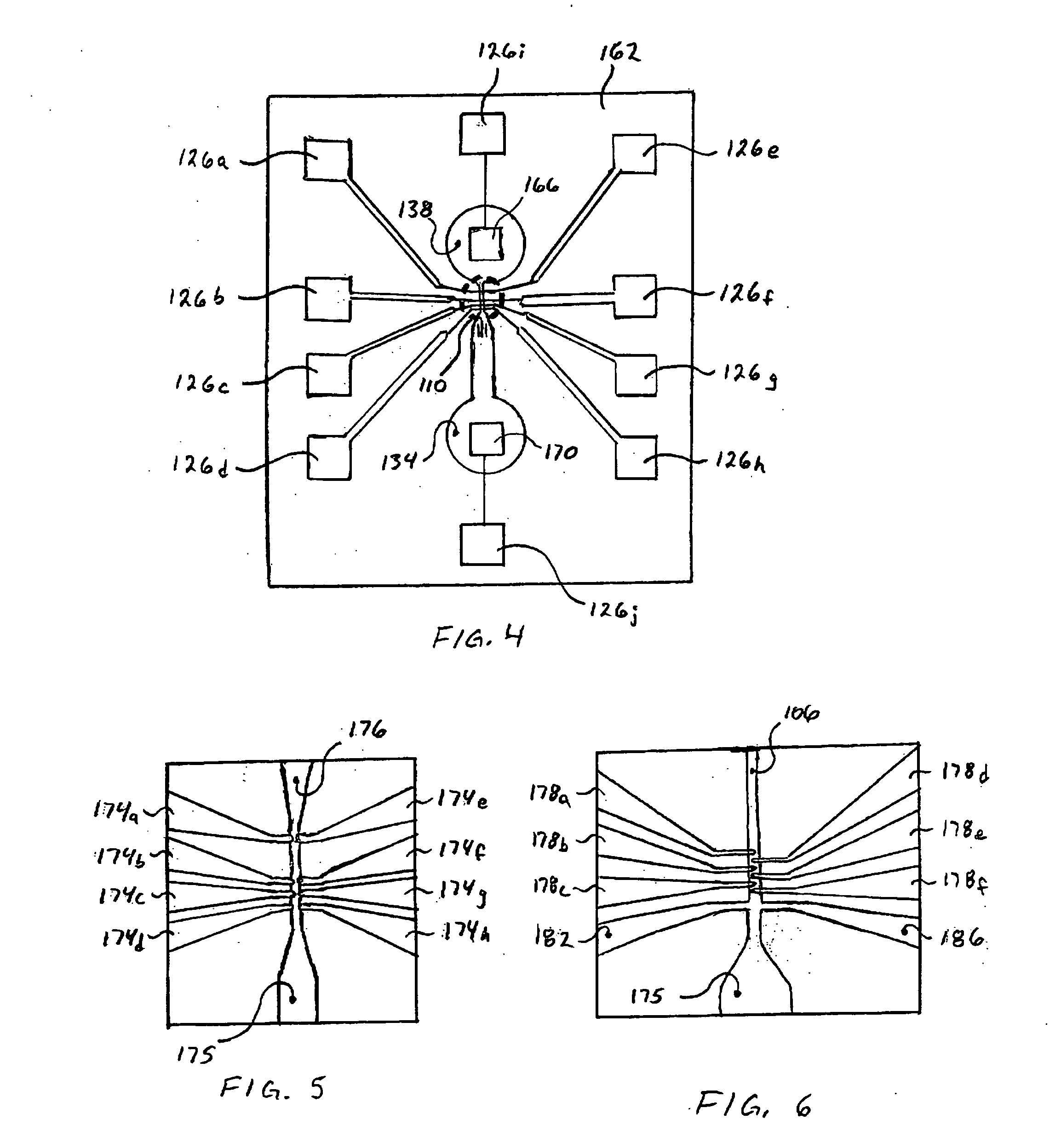Electrical detectors for microanalysis
- Summary
- Abstract
- Description
- Claims
- Application Information
AI Technical Summary
Benefits of technology
Problems solved by technology
Method used
Image
Examples
Embodiment Construction
[0045] The following description provides specific details in order to provide a thorough understanding of the invention. The skilled artisan, however, would understand that the invention can be practiced without employing these specific details. Indeed, the invention can be practiced by modifying the illustrated devices and described methods and can be used in conjunction with certain apparatus and techniques already being conventionally used in industry. It is to be understood that reference to an item being “on” a layer, or carried by a substrate, is intended to encompass the structure as recited and also including one or more intervening layers. Furthermore, structure may be regarded as being carried “by” or being “on” a layer if the structure in question is formed “in” the referenced layer. With respect to material characterization, the word “machinable” is intended to encompass material in which patterns, or structural shapes, can be formed or manipulated using material remova...
PUM
| Property | Measurement | Unit |
|---|---|---|
| Length | aaaaa | aaaaa |
| Area | aaaaa | aaaaa |
| Length | aaaaa | aaaaa |
Abstract
Description
Claims
Application Information
 Login to View More
Login to View More - R&D
- Intellectual Property
- Life Sciences
- Materials
- Tech Scout
- Unparalleled Data Quality
- Higher Quality Content
- 60% Fewer Hallucinations
Browse by: Latest US Patents, China's latest patents, Technical Efficacy Thesaurus, Application Domain, Technology Topic, Popular Technical Reports.
© 2025 PatSnap. All rights reserved.Legal|Privacy policy|Modern Slavery Act Transparency Statement|Sitemap|About US| Contact US: help@patsnap.com



